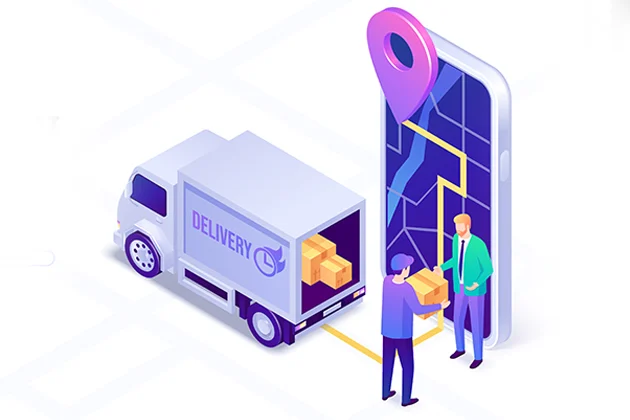Logistics and delivery management play a pivotal role in the success of any business. Whether you’re managing e-commerce operations, overseeing supply chains, or coordinating a fleet of vehicles, the need for efficient, cost-effective delivery systems has never been greater. With rising customer expectations and the complexity of managing deliveries across various regions, leveraging the right tools is crucial. Enter delivery planning software—a game-changing solution that offers smarter logistics management.
What Makes Delivery Planning Software Essential?
Running an efficient delivery operation requires more than just manual oversight or basic routing systems. Effective delivery planning software goes beyond traditional logistics management by integrating various technologies to optimize routes, manage schedules, and enhance customer experience. Let’s break down the essential benefits that come with adopting this technology:
Optimizing Routes
At the heart of any successful delivery operation is route optimization. Gone are the days of relying on paper maps or simple GPS to find the quickest way from point A to point B. Advanced delivery planning software uses artificial intelligence (AI) and machine learning to calculate the most efficient routes based on real-time data. This optimization reduces fuel costs, ensures timely deliveries, and improves overall fleet management.
For instance, AI-driven route optimization accounts for variables such as road closures, weather conditions, and traffic congestion—factors that traditional methods often overlook. This results in faster delivery times, decreased fuel consumption, and increased customer satisfaction.
Real-Time Tracking and Visibility
Customer expectations today are higher than ever, with many demanding real-time tracking of their deliveries. Delivery planning software provides this feature by offering both drivers and customers real-time updates on the status of their shipments. Not only does this ensure that deliveries are on schedule, but it also offers peace of mind, as customers can track their items from departure to arrival.
For businesses, real-time tracking means enhanced operational visibility, allowing for more proactive management of potential delays or issues. The ability to make quick adjustments based on live data helps businesses avoid costly mistakes and maintain high service levels.
Cost Management
Cost control is one of the most significant concerns in logistics, particularly as fuel prices and operational costs continue to rise. Delivery planning software automates the planning process to optimize delivery schedules, consolidate shipments, and reduce unnecessary trips. By making deliveries more efficient, businesses can save on fuel, labor, and fleet maintenance costs.
Moreover, automated delivery scheduling helps reduce the risk of human error, ensuring that deliveries are planned within budget constraints and without overloading the system. The savings on fuel, in particular, can be substantial when multiple delivery routes are optimized simultaneously.
Scalability and Flexibility
One of the major advantages of delivery planning software is its scalability. As your business grows, your logistics needs evolve, and your delivery planning system must be able to adapt. Whether you’re expanding into new regions or increasing your fleet size, the software must scale seamlessly to accommodate new demands without losing efficiency.
Additionally, flexibility is essential—many solutions offer customizable features that can be tailored to specific industries or business models. Whether you’re a small local retailer or a large global supply chain operator, the right software can be adjusted to meet your needs.
Key Features to Look for in Delivery Planning Software
When selecting delivery planning software, it’s essential to consider the features that best address your unique logistics requirements. Here are the most critical functionalities that should be on your radar:
Route Optimization
The backbone of any delivery planning software is route optimization. Advanced systems can calculate multiple route options, taking into account factors like distance, time, delivery windows, and traffic patterns. Look for software that not only suggests the best route but can also dynamically reroute drivers in real-time based on changing conditions.
This functionality can save businesses significant resources by reducing miles driven and improving on-time performance. The ideal software will allow users to test different route configurations and adjust delivery plans as needed.
Automated Scheduling
Automated scheduling features help you manage delivery windows, time slots, and driver shifts without manual intervention. By integrating this feature into your delivery planning software, you ensure that deliveries are assigned to the right driver at the right time, improving the utilization of both drivers and vehicles.
This capability helps businesses efficiently handle peak periods, like holiday seasons or promotional events, where delivery demand is heightened. It also makes it easier to manage last-minute changes, such as urgent orders or customer requests.
Driver Management Tools
A comprehensive delivery planning software package should include driver management tools that make it easier to assign tasks, track performance, and communicate with your team. These tools help in maintaining a well-organized fleet by enabling better management of driver schedules, tasks, and performance.
Some software solutions offer driver communication platforms, allowing drivers to receive updates or alerts directly through a mobile app. Performance tracking also ensures that you can evaluate driver productivity and identify areas for improvement.
Customer Notifications
Keeping customers informed about the status of their deliveries is critical in today’s fast-paced environment. Look for delivery planning software that integrates automated customer notifications, including estimated delivery windows, real-time tracking updates, and delivery confirmations.
This proactive communication reduces customer frustration and enhances the overall customer experience. A system that sends timely updates via text, email, or mobile app is invaluable in keeping customers engaged and satisfied.
Conclusion
Adopting the right delivery planning software can transform your logistics operations, improving efficiency, reducing costs, and enhancing customer satisfaction. By considering your business’s specific needs and choosing software with the right features, you can streamline your logistics processes and stay ahead in an increasingly competitive market. Whether you’re a small local retailer or a large international supplier, the right delivery planning software can be the key to driving success in your logistics operations.










